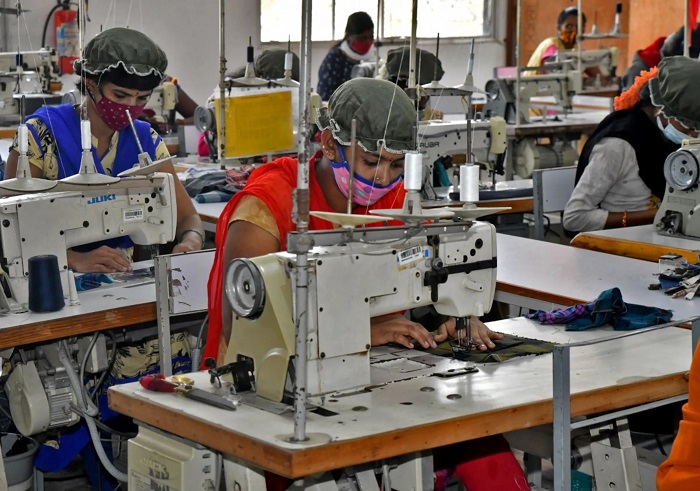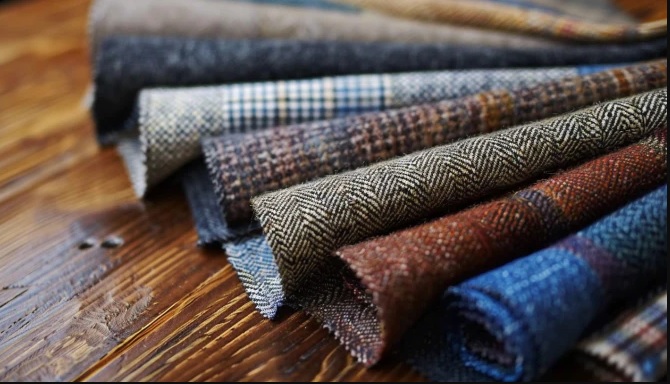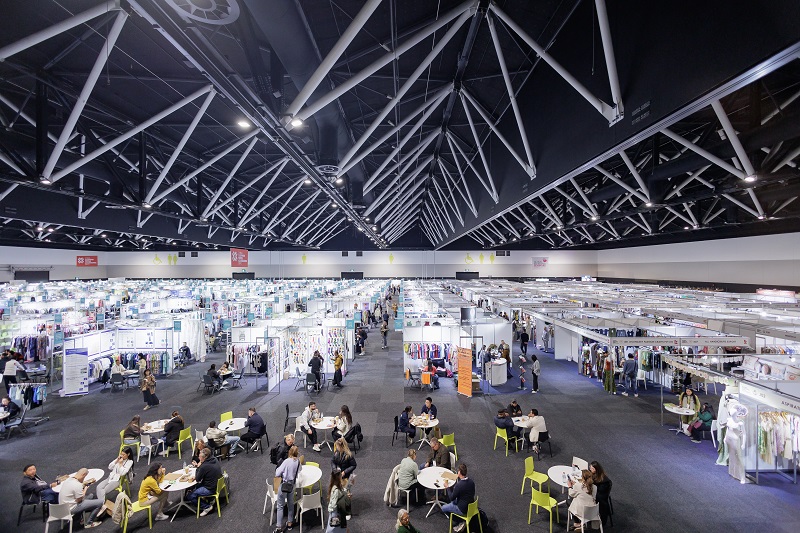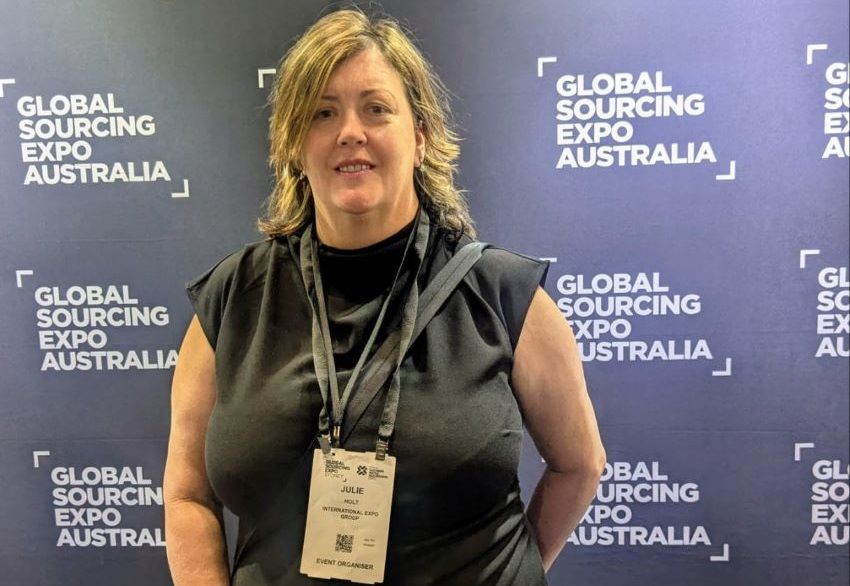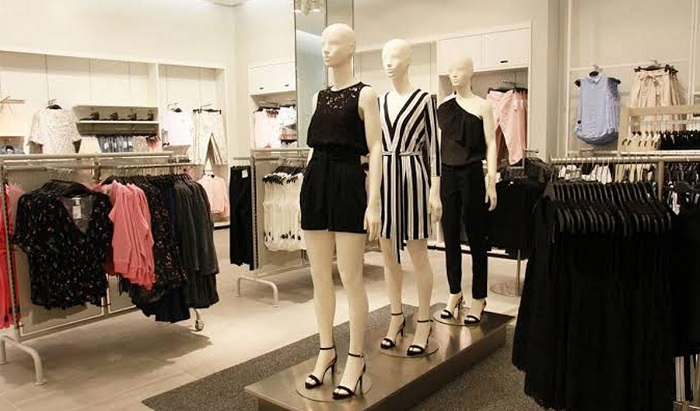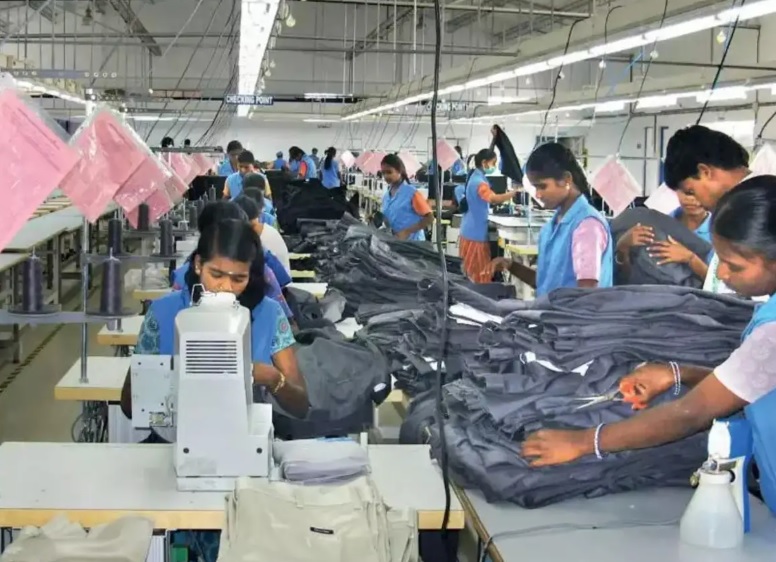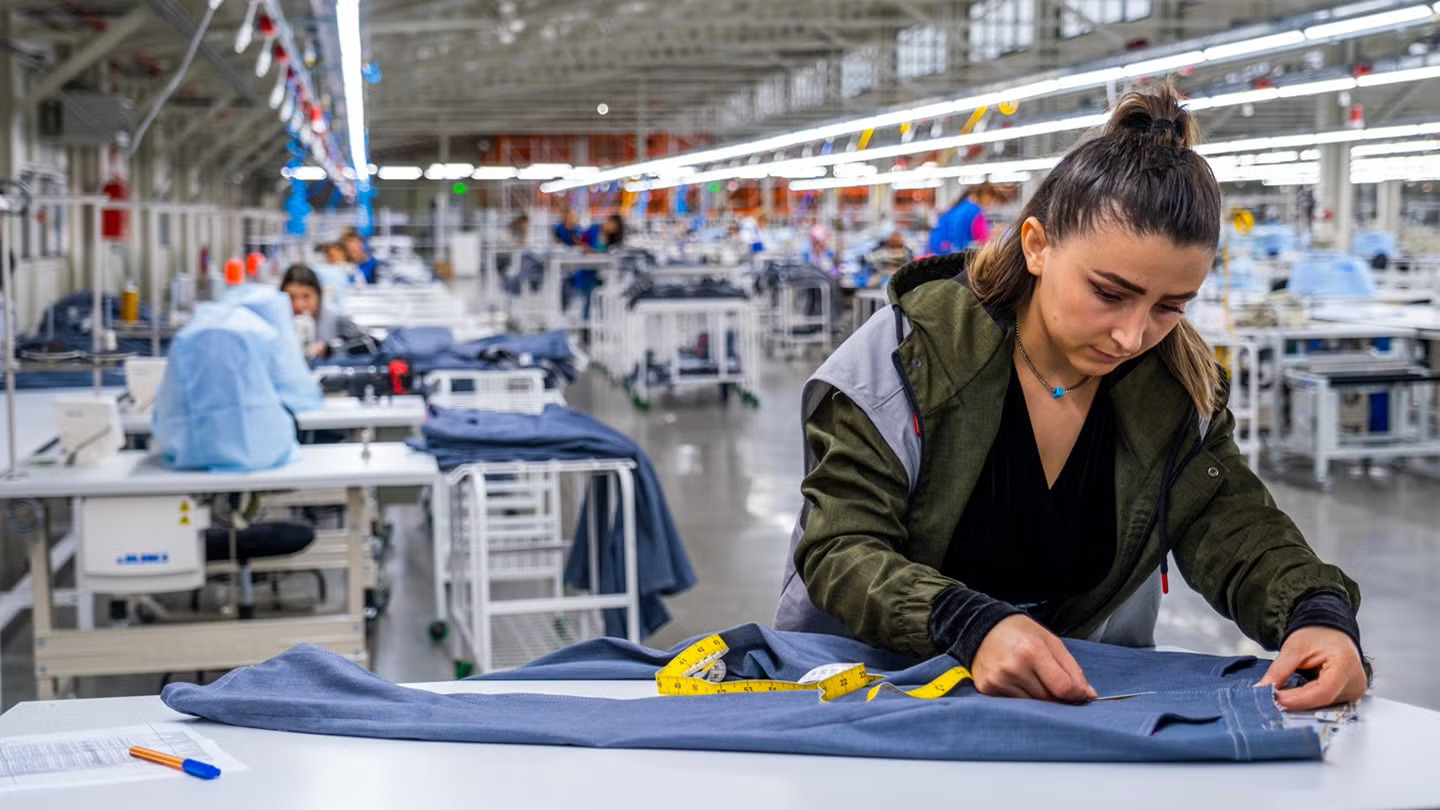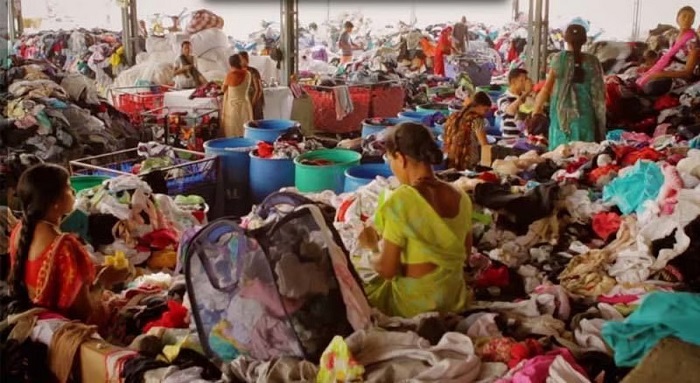FW
The fashion industry, built on trends and textiles, is facing a stark reality: its environmental footprint is unsustainable. Hidden deep within its complex supply chains, specifically in the often-overlooked Tier II suppliers lies a significant source of carbon emissions. However, a recent McKinsey & Company report, ‘Sustainable Style: How Fashion Can Reduce Tier 2 Emissions’ offers a glimmer of hope, revealing that decarbonizing this crucial segment might be surprisingly affordable.
The hidden cost of fabric and finishing
Tier II suppliers, including fabric mills, dyeing facilities, and finishing plants, are responsible for 45 per cent to 75 per cent of a garment's total carbon emissions. This is where raw materials are transformed into usable textiles, a process that often involves energy-intensive processes powered by fossil fuels.
As experts point out, many brands focus on their direct suppliers, Tier I, which are the garment factories. But the real impact lies further upstream, in the Tier II, where the energy-intensive processes of fabric production and finishing take place. The report highlights the following:
Table: Carbon emission distribution in a typical garment supply chain
|
Supply chain tier |
Estimated carbon emission contribution |
|
Tier I (Garment Factories) |
25% - 55% |
|
Tier II (Fabric Mills, Dyeing, Finishing) |
45% - 75% |
|
Tier III+ (Raw Material Extraction, Agriculture) |
Variable, Significant |
The 1 per cent solution
The most striking finding of the McKinsey report is the feasibility of decarbonization. It suggests that implementing sustainable practices in Tier II, such as switching to renewable energy sources, improving energy efficiency, and adopting low-impact dyeing techniques, would translate to a mere 1 per cent increase in the Cost of Goods Sold (COGS) per item. "This is not a prohibitive cost," states the report. "It's a manageable investment that can lead to significant environmental benefits without drastically impacting consumer prices."
Indeed, the 1 per cent figure is encouraging however the report does acknowledge the challenges. The fragmented nature of the Tier II supplier base, with numerous small and medium-sized enterprises (SMEs), requires collaborative efforts from brands, suppliers, and policymakers. Access to financing, technological know-how, and standardized measurement methodologies are also crucial.
The report also highlights significant opportunities. Brands can leverage their purchasing power to incentivize suppliers, invest in capacity building, and establish transparent supply chain traceability. Governments can implement supportive policies, such as carbon pricing and renewable energy subsidies.
A collaborative approach
Experts say, this is not a problem that any single player can solve. It requires a collective effort, a systemic shift in the way we produce and consume fashion. Of course, the 1 per cent solution offers a tangible pathway towards a more sustainable fashion industry. By embracing collaborative partnerships, investing in innovative technologies, and prioritizing transparency, the industry can stitch together a future where style and sustainability go hand in hand. The report's findings are not just a call to action; they are a blueprint for a more responsible and resilient fashion ecosystem.
Over 16.6 million sq ft of new Grade A mall space is expected to added in India’s top seven cities between 2025 and 2026, according to a new report by real estate services firm Anarock.
This rise in retail space will be led by Hyderabad and Delhi-NCR, which will together account for 65 per cent of the upcoming supply, signaling a growing focus on high-growth consumption hubs. This development is part of a broader retail pipeline projected to add more than 40 million sq ft of mall space across key urban centers by 2029.
This surge in development is largely driven by a shortage of new Grade A mall supply in recent years, says Anuj Kejriwal, CEO & Managing Director, Anarock Retail. In 2022, only 2.6 million sq ft of new supply entered the top seven cities, while leasing hit 3.2 million sq ft Similarly, in 2023, 5.3 million sq ft of retail space was added, compared to 6.5 million sq ft. leased.
The gap widened further in 2024 due to delays in project approvals during India’s general and state elections. Just 1.1 million sq ft of new Grade A supply was added during the year, while leasing remained strong at 6.5 million sq. ft.
Despite the potential for oversupply, mall leasing across the top seven cities will exceed 12.6 million sq ft over the next two years, estimates Anarock. This will be driven by robust consumer demand and the entry of over 60 international brands across fashion, electronics, lifestyle, and F&B since 2020.
Mall vacancy rates are expected to decline to 8.2 per cent in 2025 and 8.5 per cent in 2026, from 15.5 per cent in 2021.
Beyond metros, Tier II and Tier III cities are emerging as key retail growth markets due to rising disposable incomes and greater digital penetration. E-commerce adoption has soared in these areas, now accounting for 65 per cent of online shopping, and is expected to maintain its lead through FY 2030.
Having doubled from 140 million in 2020 to 260 million in 2025, India’s online shopper base is forecast to reach 700 million by 2035.
Bangladesh's ready-made garment (RMG) exports to key markets including the United States, the United Kingdom, and Europe experienced significant growth during the first ten months of FY25 spanning July-April 2024-25.
Compiled by the Bangladesh Garment Manufacturers and Exporters Association, data from the Export Promotion Bureau (EPB), shows, Bangladesh's RMG exports increased by 10 per cent to $32.64 billion during July-April’24-25 as against $29.67 billion recorded during the same period in FY24.
Apparel exporters attribute this sustained growth to the increasing demand from prominent brands and retailers, which has maintained momentum despite recent political instability.
Bangladesh’s largest market, EU’s RMG imports increased by 10.55 per cent to $16.25 billion during the July-April 2024-25 period. The country’s exports to the EU accounted for nearly half (49.78 per cent) of Bangladesh's total RMG earnings.
Demonstrating a stronger growth, the United States registered a 15.75 per cent rise to $6.22 billion in RMG imports from Bangladesh during the ten-month period as against $5.38 billion in the same period of FY24. Earnings from the US constituted 19.09 per cent of the total revenue.
Growth in the UK market remained modest at 3.41 percent with RMG imports from Bangladesh totaling $3.63 billion, compared to $3.5 billion in July-April FY24. Bangladesh’s exports to Canada also grew by 13.86 per cent, to $1.05 billion, as against $924.7 million in the same period last year.
Among EU nations, Germany continued to be the top destination for Bangladeshi garments, importing $4.08 billion worth of RMG products in July-April FY25. Following Germany were Spain ($2.85 billion), France ($1.78 billion), the Netherlands ($1.72 billion), Poland ($1.37 billion), and Italy ($1.27 billion). While the US, Canada, the UK, and the EU are considered traditional markets, non-traditional markets also showed positive growth, increasing by 6.25 per cent to $5.48 billion, from $5.16 billion in the FY24 period. These markets now represent 16.79 per cent of Bangladesh’s total RMG exports. Japan led the non-traditional markets with imports of $1.02 billion, followed by Australia ($688.23 million) and India ($563.81 million). Notably, exports to Turkey and South Korea also saw significant earnings, reaching $387.46 million and $369.70 million, respectively.
However, Faruque Hassan, Former President, BGMEA, cautions, growth might remain negative in the coming months due to concerns over new US tariffs, which have reportedly led to a slowdown in orders. The government needs to engage in negotiations and diplomatic efforts regarding these tariffs, he emphasizes.
Mohiuddin Rubel, Former Director, BGMEA, suggests, the ongoing global trade conflicts may present new opportunities for Bangladesh to focus on non-traditional markets, product diversification, and innovation. In FY24, Bangladesh exports RMG products worth $38.48 billion.
A significant rise in cotton farming in Telangana during the 2025 Kharif season is boosting demand for high-quality cotton seeds. Farmers returning to cotton due to promising market returns, have expressed concerns over the ability of these seeds meeting the anticipated need.
Traditionally constituting over 40 per cent of the total planted area in the state, Cotton is preferred for its ability to thrive in Telangana’s climate and soil. Furthermore, strong market demand has driven this increase, with cotton fetching attractive prices of $96 to $168 per hundredweight in previous seasons.
With cotton cultivation expected to expand beyond 5.06 million acre, the demand for quality cotton seeds has skyrocketed. Officials estimate, over 107 million packets of cotton seeds are needed to support the planned expansion.
However, the overall availability of cotton seeds is only about half of the projected requirement according to sources. This has raised concerns about whether farmers will have access to enough seeds before planting begins in late May. Officials claim that efforts are underway to make 240 million packets (15.87 ounces each) of cotton seeds available. However, logistical challenges and market supply limitations pose obstacles.
In the past, shortages in certain districts have allowed private sellers to take advantage of farmers by charging inflated prices. With demand at its peak, growers are worried about whether the government will step in decisively to ensure timely availability or allow private traders to dominate the market once again.
The presence of fake seeds in the market would be a major problem. This can only be addressed by having sufficient stock available by the end of May. The presence of Cotton Corporation of India (CCI) purchasing centers in key districts like Adilabad and Mahabubnagar is expected to help ensure fair market access.
Union Textile Minister Giriraj Singh advocates blending o milkweed fibers with traditional materials
Speaking at Rajendra Prasad Central Agricultural University (RPCAU) in Pusa, Samastipur, Union Textiles Minister Giriraj Singh advocated for the blending of milkweed fibers with traditional materials like polyester, wool, viscose, and cotton, emphasizing the potential to create high-quality textiles.
This innovative approach could address the nation's rising demand for alternative fibers, aligning with Prime Minister Narendra Modi’s vision for a self-reliant India, Singh emphasized.
On being combined with other factors, milkweed significantly improves fabric warmth, breathability, and softness, making it an ideal choice for premium, comfortable clothing, he added. He further suggested, with proper development, milkweed fibers could even surpass the renowned Kashmiri ‘pashmina’ in quality and versatility.
Currently, the Bihar Government is conducting an extensive research on milkweed production and its applications in the textile industry. Northern India Textile Research Association (NITRA) park is also establishing processing and testing facilities to support the development of this promising fiber.
To boost the agro-textile sector, the National Technical Textile Mission and RPCAU plan to sign an MoU to help increase the farmers' incomes and accelerate the growth of agro-textiles.
PS Pandey, Vice Chancellor, RPCAU added, a dedicated agricultural research center will soon be established at the university, further reinforcing the integration of technical textiles in agriculture and supporting India's drive towards self-sufficiency in fiber production.
The US House Ways and Means Committee has introduced a key provision in its budget reconciliation bill to permanently end de minimis access for commercial shipments from all countries by July 1, 2027. The move has drawn strong support from the National Council of Textile Organizations (NCTO), which represents the entire US textile value chain from fiber to finished goods.
NCTO President and CEO Kim Glas praised the committee's leadership, particularly Chairman Jason Smith (R-MO) and Rep. Greg Murphy (R-NC), for acting on what she described as a ‘destructive loophole’ that has long harmed US textile manufacturers and facilitated the entry of illicit goods, including narcotics such as fentanyl, into the country.
De minimis rules currently allow low-value shipments to enter the US duty-free and with minimal customs inspection. According to Glas, nearly four million such shipments enter the US each day, many of which are unregulated and pose safety and security risks.
While commending the proposed 2027 deadline, NCTO is urging lawmakers and the administration to expedite the timeline. Glas noted that express shippers have already adapted their logistics operations, especially for Chinese imports, and are well-positioned to meet new enforcement standards.
Glas also acknowledged the Trump administration’s earlier action to exclude Chinese goods from de minimis benefits, noting that China accounts for about two-thirds of all such shipments. She called on the Biden administration to use executive powers to immediately close the loophole for all countries, pending congressional action.
The legislation is expected to be marked up by the committee soon as it moves through the legislative process.
Strafe Outerwear, known for its innovative mountain gear, has launched its first-ever down jacket the Palisade Down Insulator ahead of Fall/Winter 2025-26. This new piece blends high performance with deep sustainability commitments through partnerships with Pertex, NetPlus, and Allied Feather + Down.
Designed as a versatile layering piece, the Palisade offers lightweight warmth and durability. It features NetPlus recycled nylon, derived from discarded fishing nets collected from coastal communities, helping reduce ocean plastic while supporting local economies. The material has a fully traceable supply chain, verified by third-party audits.
The jacket’s outer shell is reinforced with Pertex Diamond Fuse fabric, known for abrasion resistance and packability. Inside, it’s insulated with 800-fill power goose down from Allied Feather + Down, which is RDS and GRS certified, ensuring ethically sourced and traceable materials. This down is also treated with ExpeDRY technology by Fuze, a gold-particle innovation that accelerates drying and boosts moisture control, ideal for dynamic mountain conditions.
Pia Halloran, VP of Product & Design at Strafe, said the goal was to merge cutting-edge materials with functional design, delivering superior warmth and fit while minimizing environmental impact. Further supporting this vision, the Palisade is completely PFAS-free, eliminating harmful water-repellent chemicals without sacrificing performance.
Available in men’s and women’s sizes, the Palisade Down Insulator will hit shelves at select retailers and online at strafeouterwear.com for FW 2025-26, marking a significant milestone in Strafe’s evolution toward responsible innovation.
M S Parmar, a veteran textile scientist with over three decades of service at the Northern India Textile Research Association (NITRA), has taken over as Director General of the institute with effect from May 8, 2025. He will also continue to oversee NITRA’s academic division, the NITRA Technical Campus (NTC).
With 32 years of dedicated service, Parmar brings unparalleled expertise in Textile Chemistry, Protective Textiles, Unconventional Fibres, and Quality Control. His contributions include 28 completed R&D projects funded by both government and industry, 15 patents (5 granted), 140 technical presentations, and over 130 published research articles. He has also mentored 48 students across various academic levels.
Parmar’s recent innovation in developing thermal layers for extreme cold weather garments has earned him widespread recognition. His work was personally appreciated by the Prime Minister Narendra Modi and Textiles Minister Giriraj Singh. In 2023, he was conferred the Honorary Fellowship of the Textile Association (Hon F T A).
Known for his passion for research and commitment to industry innovation, Parmar is expected to lead NITRA into a new era of technical excellence and sustainable textile solutions.
The American Apparel & Footwear Association (AAFA) has responded to the Joint Statement issued in Geneva on the US-China Economic and Trade Meeting, which announced a 90-day pause in tariff escalations. Effective May 14, US tariffs on Chinese imports will be reduced to 30 percent, while China will lower its tariffs to 10 percent.
AAFA President and CEO Steve Lamar welcomed the move, calling it a temporary relief from the trade gridlock that has persisted since April 9. However, he warned that the remaining 30 percent tariff added to existing Section 301 and most favored nation (MFN) duties still poses a significant burden on US consumers, especially during back-to-school and holiday seasons.
“If freight costs rise due to lingering disruptions in shipping, we may see further inflation in consumer prices,” Lamar stated. He emphasized that a long-term trade agreement is essential not just with China, but globally to enable predictable investment, sourcing, and manufacturing decisions.
The announcement follows weeks of AAFA-led advocacy, highlighting that the current tariff framework does not strengthen domestic manufacturing nor support the 3.5 million American workers employed in the apparel and footwear industry.
GHCL Textiles plans to invest Rs. 1,000 crore (approximately $120 million) towards expanding its spinning and knitting operations.
Of the planned Rs 1,000 crore investments, GHCL Textiles has already deployed Rs. 500 crore to add 25,000 spindles and 40 circular knitting machines. These new capacities will help boost the company’s production volumes, product diversity, and speed to market, particularly in knitted fabrics—an area seeing rising global demand.
The company also plans forward integration into weaving and dyed fabric manufacturing, positioning itself to serve a wider customer base across home textiles, apparel, and industrial fabrics. The reorganization of its Kaveri section at the Manaparai unit is anticipated to unlock further operational efficiencies, reduce conversion costs, and contribute to margin improvement. In FY25, GHCL Textiles’ revenues increased by 10 per cent Y-o-Y to Rs. 1,168 crore. The company’s EBITDA increased to Rs 117 crore (approximately $14 million), with EBIDTA margins expanding by 11 per cent, while profit after tax rose by 123 per cent to Rs 56 crore (approximately $6.7 million).
GHCL Textiles currently operates with a robust manufacturing base that includes 200,000 ring spindles, 3,320 rotors, 480 vortex positions, and 5,760 TFO spindles, allowing it to produce a diverse range of yarns.
Its key product offerings include cotton, synthetic, and blended yarns, such as compact, slub, core-spun, double yarns, mélange, and value-added synthetic blends. The company also manufactures knitted fabrics, leveraging its expanding circular knitting infrastructure. These offerings are well-aligned with evolving global demand for innovative, sustainable, and high-performance textile materials, positioning GHCL Textiles as a preferred partner for leading brands and manufacturers.

